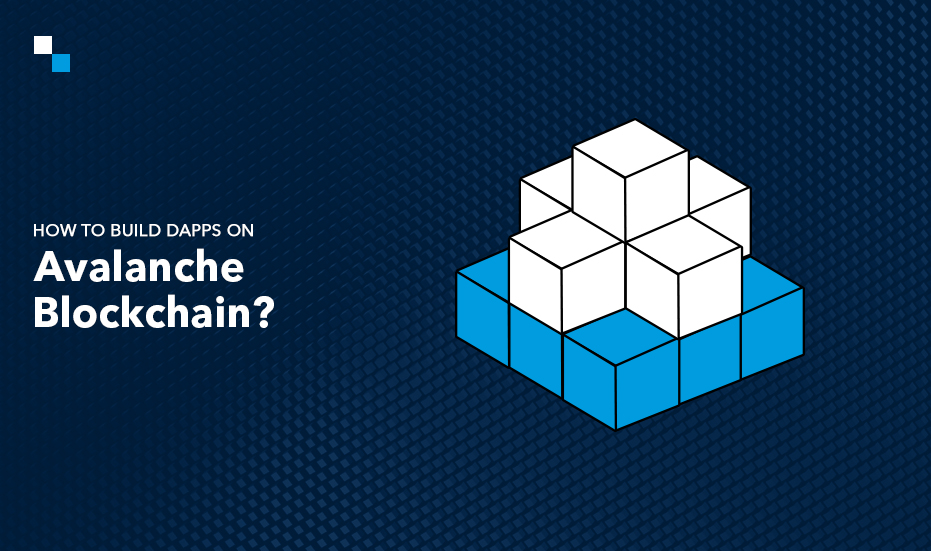
Real Estate Tokenization: Resolving Liquidity Challenges in Property Investment
September 30, 2024
Your Guide To Unlocking Interoperability With Cross-Chain Bridge Platform Solutions
October 1, 2024There is no denying that Ethereum has been the go-to choice for dApp development since its launch. However, many enterprises are now turning to other blockchains due to the growing concerns of high gas fees and network congestion. Avalanche blockchain, with its unique consensus mechanism, high throughput, and customizable subnets, has emerged as one of the leading platforms for building dApps.
What is Avalanche?
Launched by Ava Labs, Avalanche blockchain is a decentralized, open-source platform designed to support high-throughput decentralized applications and custom blockchain networks. Avalanche operates on three primary chains:
- X-Chain(Exchange Chain): For asset creation and transfers.
- P-Chain(Platform Chain): For managing validators and subnets.
- C-Chain (Contract Chain): The chain where smart contracts are deployed, and the focus of dApp development.
Avalanche Blockchain’s Architecture
- Avalanche Network: The primary network that coordinates and secures the entire ecosystem.
- Subnets: Independent blockchains that can be customized for specific use cases. Contract chains are subnets designed for smart contract execution.
- Validator Nodes: Participants in the network responsible for validating transactions and maintaining consensus.
What is Avalanche Contract Chain?
The Avalanche Contract Chain is the primary chain where developers can build and deploy dApps using smart contracts. It is fully EVM compatible, meaning that developers who are familiar with Ethereum can easily port their existing dApps or create new ones using the same tools and programming languages. By utilizing the C-Chain, enterprises can leverage Avalanche’s consensus mechanism, which delivers faster transaction processing and lower fees.
Key Features of Avalanche Contract Chain
When building on Avalanche Blockchain, the C-Chain offers several key features that make it ideal for enterprise-grade dApps:
-
- EVM Compatibility: Developers can build dApps using Solidity and the entire Ethereum development stack. This reduces the learning curve and allows for seamless migration of existing Ethereum dApps.
- High Throughput: Avalanche’s unique consensus mechanism can process up to 4,500 TPS. This high throughput allows enterprises to handle large-scale applications with ease.
- Low Latency: Transactions on the C-Chain are finalized within seconds. This near-instant finality is crucial for dApps requiring real-time performance, such as financial services or decentralized exchanges.
- Low Transaction Costs: While gas fees on Ethereum have become a barrier for many developers, Avalanche blockchain offers significantly lower fees which makes it more affordable for businesses to operate their dApps.
- Interoperability: Avalanche’s C-Chain supports cross-chain asset transfers and interoperability with Ethereum-based assets while allowing developers to tap into both ecosystems and unlock new possibilities for dApp functionality.
- Subnets for Customization: Avalanche blockchain allows businesses to create their own blockchain networks, called subnets, tailored to their specific needs. These subnets can be private or public that offer flexibility in terms of governance, compliance, and performance.

How to Build dApps on Avalanche Blockchain?
Step 1: Set Up Your Development Environment
- Install Avalanche Node: Download and install the Avalanche node software from the official website.
- Create a Wallet: Generate a new wallet address to interact with the network.
- Obtain AVAX: Purchase AVAX tokens, the native cryptocurrency of Avalanche, to pay transaction fees and stake for validator nodes.
Step 2: Create a Subnet for Your dApp
- Define Subnet Parameters: Specify the subnet’s name, purpose, and rules.
- Stake AVAX: Stake a minimum amount of AVAX to create the subnet.
- Configure Validator Nodes: Select validators to secure and operate the subnet.
Step 3: Develop Your dApp
- Choose a Programming Language: Avalanche blockchain supports various programming languages, including Solidity, Go, and Rust.
- Write Smart Contracts: Create smart contracts that define the logic and rules of your dApp.
- Deploy Smart Contracts: Deploy your smart contracts to the subnet using the Avalanche SDK.
- Build a Frontend: Develop a user interface for your dApp using your preferred frontend framework.
Step 4: Test and Debug
- Use Testnets: Test your dApp on Avalanche’s testnets to avoid risking real funds.
- Debug Smart Contracts: Utilize debugging tools and techniques to identify and fix issues in your smart contracts.
- Monitor Performance: Measure your dApp’s performance and scalability to ensure it meets your requirements.
Step 5: Deploy to the Mainnet
- Migrate to Mainnet: Once your dApp is thoroughly tested, deploy it to the mainnet.
- Promote Your dApp: Market your dApp to attract users and build a community.
Conclusion
Whether you’re launching a DeFi platform, NFT marketplace, or enterprise-grade solution, Avalanche Blockchain development empowers you to unlock new possibilities in the decentralized world. With Avalanche’s customizable subnets, low transaction costs, and high throughput, businesses can tailor their blockchain solutions to meet industry-specific needs while ensuring robust performance and future-proofing their operations. Antier is a trusted Avalanche blockchain development company that helps businesses develop dApps on Avalanche at the most optimal prices.



